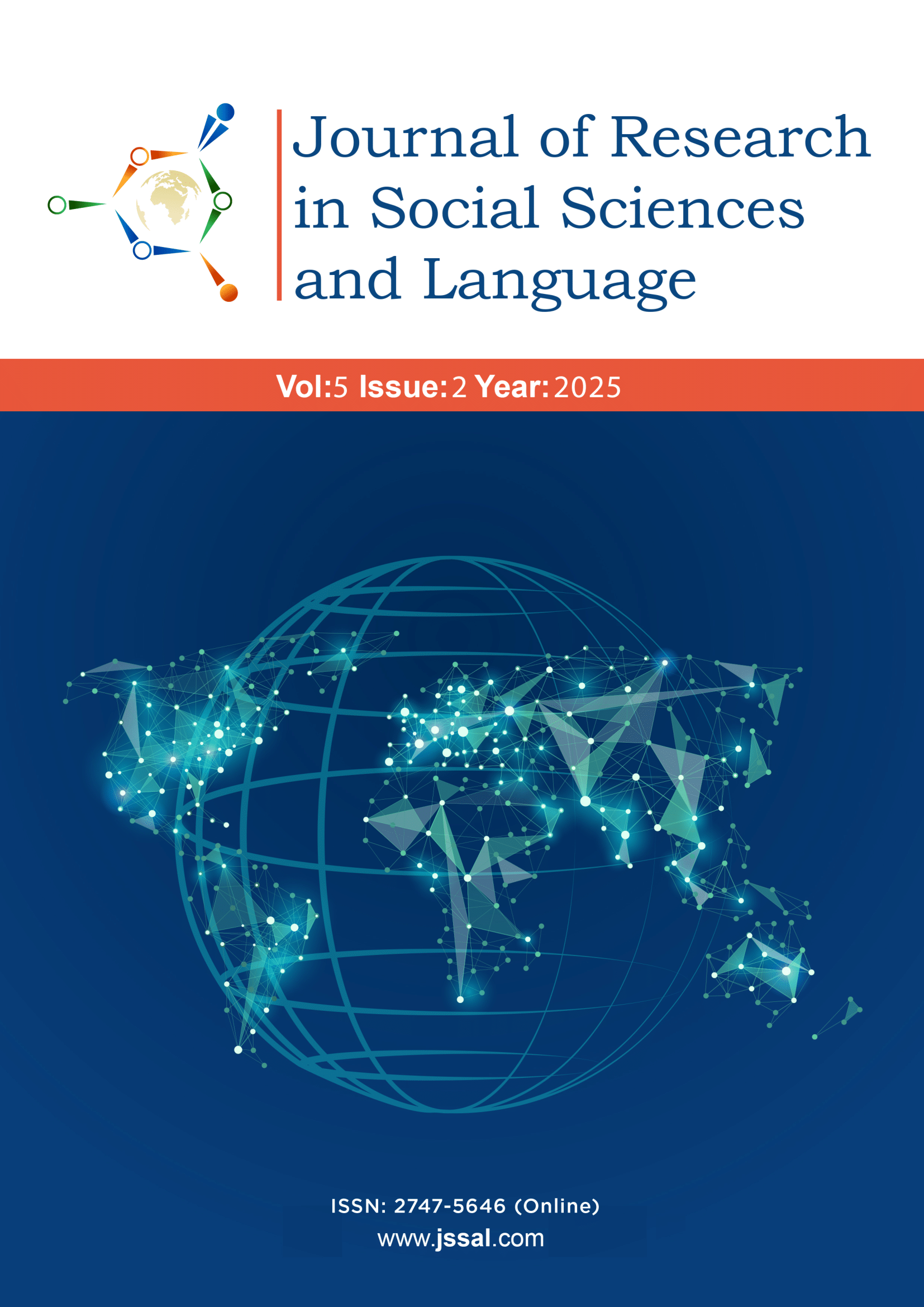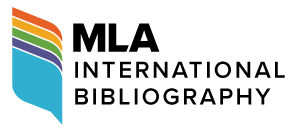Recontextualisation of multilingualism in learners’ graffiti in selected Zimbabwean secondary boarding schools
DOI:
https://doi.org/10.64782/jssal/2025.216Keywords:
Graffiti, multilingualism, code-switching, bilingualism, translanguaging.Abstract
Different forms of cross-linguistic interactions in learners’ graffiti in Zimbabwe have not received attention in empirical multilingualism research. Thus, this paper, part of a postgraduate study, explored the acts of codeswitching in the graffiti secondary school boarding learners in Zimbabwe. Seven secondary boarding schools were sampled for the study, providing valuable insights into the linguistic landscape of graffiti writing in these institutions. Employing a qualitative research design, graffiti inscriptions were collected exclusively from classroom walls and desktops. All the data were transcribed, paying particular attention to the source of the inscriptions from a locational linguistic perspective. The inscriptions were thematically categorised based on the specific linguistic features constructed. The study revealed instances of language alternation during different phases of graffiti communication, encompassing interactions between learners and teachers or other authorities, as well as peer interactions. Understanding codeswitching dynamics is crucial for optimising language use strategies and fostering a more effective communicative environment. This research underscored the need for a nuanced approach to subcultural interaction, acknowledging and leveraging the new multilingual era in graffiti writing. By recognising the role of these linguistic practices, educators may begin to understand that multilingualism in graffiti writing is a socially constructed phenomenon where languages are sets of resources rather than fixed linguistic systems. This study sets the stage for further research on the implications of codeswitching in diverse subcultural discourses within educational settings.
Downloads
References
Alinda, A. R (2019). The types and functions of codeswitching among Malay bilinguals (Master thesis). Malaysia: University of Malaya, Available from: http://studentsrepo.um.edu.my/id/ eprint/10679.
Aqilah, A. (2020). ‘Me inda nampak’ – Pronoun use in Malay-English codemixed social media texts. J-lalite. Journal of English Studies, 1(2), 94-106. doi: 10.20884/1.JES.2020.1.2.3482. DOI: https://doi.org/10.20884/1.jes.2020.1.2.3482
Aronin, L. (2019). What is multilingualism? In Singleton, D. M., & Aronin, L. (Eds.). (2019). Twelve lectures on multilingualism, Clevedon: Multilingual Matters: 3-34. DOI: https://doi.org/10.2307/jj.22730702.5
Bhatti, A., Sarimah, S., & Seriaznita, M. S. (2018). Codeswitching: A useful foreign language teaching tool in EFL classrooms. English Language Teaching, 11(6), 93-101. doi: 10.5539/elt.v11n6p93. DOI: https://doi.org/10.5539/elt.v11n6p93
Bakhtin, M. M. (1981). The Dialogic Imagination: Four Essays. University of Texas Press.
Canagarajah, S. (2013). Translingual Practice: Global Englishes and Cosmopolitan Relations. Routledge DOI: https://doi.org/10.4324/9780203073889
Eckert, P., & McConnell-Ginet, S. (2003). Language and Gender. Cambridge University Press. DOI: https://doi.org/10.1017/CBO9780511791147
Fachriyah, E. (2017). The functions of codeswitching in an English language classroom’, Studies in English Language and Education, 4(2), 148-156 DOI: https://doi.org/10.24815/siele.v4i2.6327
Green, D. W., & Wei, L. (2014). A control process model of codeswitching. Language, Cognition and NeuroScience, 29(4), 499-511. DOI: https://doi.org/10.1080/23273798.2014.882515
Hamdan, H. (2023). Functions of student codeswitching in a Bruneian classroom’, Southeast Asia: A Multidisciplinary Journal, 23(1), 55-69. https://doi.org/10.1108/SEAMJ-01-2023-0007 DOI: https://doi.org/10.1108/SEAMJ-01-2023-0007
Hanafiah, R., Mono, U., & Yusuf, M. (2021). Codeswitching in lecturer-students' interaction in thesis examination: A case study in Indonesia. International Journal of Instruction, 14(1), 445–458. doi: 10.29333/iji.2021.14126a. DOI: https://doi.org/10.29333/iji.2021.14126a
Jaworski, A., & Thurlow, C. (2010). Semiotic Landscapes: Language, Image, Space. Continuum.
Kemaloglu-Er, E., & Özata, H. (2020). Codeswitching in group work in EFL classes’, Journal of Language and Linguistic Studies, 16(3), 1443–1457. doi: 10.17263/jlls.803847. DOI: https://doi.org/10.17263/jlls.803847
Khoumssi, K. (2020). Functions of codeswitching in young Moroccans' facebook comments’, Journal of English Language Teaching and Linguistics, 5(1), 57-74. doi: 10.21462/jeltl.v5i1.382. DOI: https://doi.org/10.21462/jeltl.v5i1.382
Lin, A. (2013). Classroom codeswitching: Three decades of research. Applied Linguistics Review, 4(1), 195-218. DOI: https://doi.org/10.1515/applirev-2013-0009
Macdonald, N. (2001). The Graffiti Subculture: Youth Masculinity and Identity in London and New York. Palgrave MacMillan, Basingstoke.
Magill, S. (1998). Adolescent: public enemy 1. Crime and Delinquency, 44(1), 121-127. DOI: https://doi.org/10.1177/0011128798044001013
Mangeya, H. (2014). A Sociolinguistic analysis of graffiti written in Shona and English found in selected urban areas of Zimbabwe (Doctoral dissertation, University of South Africa).
Martin, J. R., & White, R. (2005). The language of Evaluation: Appraisal in language, New York: Palgrave McMillan.
Matthews, N., Speers, L., & Ball, J. (2012). Bathroom banter: Sex, love, and the bathroom wall. Electronic Journal of Human Sexuality, 15. Retrieved from http://www.ejhs.org/volume15/Banter.html
Muysken P. C. (2000). Bilingual Speech: A Typology of Codemixing, Cambridge University Press, Cambridge, MA
McLellan, J. (2020). Brunei English. In Bolton, K., Botha, W., & Kirkpatrick, A. (Eds), The Handbook of Asian Englishes (pp. 399–418), Hoboken, NJ: Wiley Blackwell. DOI: https://doi.org/10.1002/9781118791882.ch17
Munna, A. S., & Kalam, M. A. (2021). Teaching and learning process to enhance teaching effectiveness: a literature review. International Journal of Humanities and Innovation (IJHI), 4(1), 1-4. DOI: https://doi.org/10.33750/ijhi.v4i1.102
Nishanthi, R. (2020). Understanding of the Importance of Mother Tongue Learning. International Journal of Trend in Scientific Research and Development (IJTSRD), 5(1), 2456-6470.
Nordquist, R. (2019). Learn the Function of Code Switching as a Linguistic: Glossary of Grammatical and Rhetorical Terms. Retrieved from https://www.thoughtco.com/codeswitching-language-1689858
Norton, B. (2000). Identity and Language Learning: Gender, Ethnicity and Educational Change. Longman
Nyamayedenga, M. S. (2017). The implementation of Communicative Language Teaching in primary schools (Doctoral dissertation, University of Pretoria).
Ogbodo, J. C., Otaguruagu, E. J., Ngonebu, C. U., & Ogenyi, L. C. (2015). New Horizons in Communication Skills: A Use of English Course Text, Nsukka: Afro-Orbis Publishing Ltd.
Pennycook, A. (2007). Global Englishes and Transcultural Flows. Routledge. DOI: https://doi.org/10.4324/9780203088807
Polat, S., & Lange, S. D. (2025). Systematic review on pre‐service and in‐service primary school teachers’ beliefs on multilingualism: A qualitative thematic review and a quantitative meta‐analysis. Review of Education, 13(1), e70046. https://doi.org/10.1002/rev3.70046 DOI: https://doi.org/10.1002/rev3.70046
Sumartono, F., & Tan, Y. Y. (2018). Juggling two languages: Malay-English bilinguals' codeswitching behaviour in Singapore. The Linguistics Journal, 12(1), 108-138.
Ustunel, E. (2016). Current debates in classroom codeswitching, In Ustunel, E. (Ed.), EFL classroom codeswitching (pp. 83–176), London: Palgrave Macmillan. DOI: https://doi.org/10.1057/978-1-137-55844-2_4
Vygotsky, L. S. (1978). Mind in Society: The Development of Higher Psychological Processes. Harvard University Press.
Downloads
Published
How to Cite
Issue
Section
License
Copyright (c) 2025 Piason Makarati, Kufakunesu Zano

This work is licensed under a Creative Commons Attribution 4.0 International License.
The work is made available under the terms of the Public Offer and the Creative Commons Attribution 4.0 International License (CC BY 4.0). This license allows anyone to reproduce, distribute, and adapt the material in any medium or format, including for commercial purposes, provided that proper credit is given to the creator(s) and the original source.












